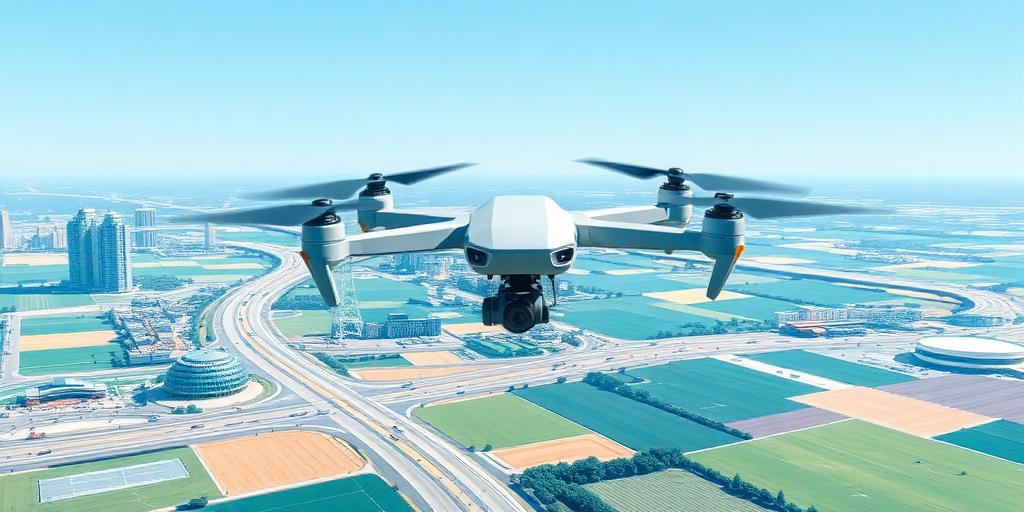The landscape of modern technology is continually reshaped by innovations that transcend previous limitations. Among these, Unmanned Aerial Vehicles, commonly known as drones, have emerged as transformative tools, fundamentally altering operational paradigms across a multitude of sectors. From enhancing logistical efficiencies to providing critical aerial intelligence, the pervasive influence of drone technology is undeniable, signaling a new era of capability.
The Logistics Revolution: Drones in Delivery
One of the most anticipated applications of drone technology lies within the realm of logistics and delivery. The concept of "last-mile delivery"—the final leg of a product’s journey to the customer—is poised for a significant overhaul. Companies are actively investing in drone delivery systems to expedite parcel shipments, particularly in urban areas or remote locations where traditional methods are inefficient or cost-prohibitive. For instance, medical supplies, urgent documents, and small e-commerce packages are ideal candidates for drone transport, promising reduced delivery times and operational costs. However, widespread adoption hinges on overcoming challenges such as battery life limitations, payload capacity, airspace management, and the establishment of robust regulatory frameworks to ensure safe and reliable operations. The future of drone delivery systems will necessitate sophisticated air traffic control systems tailored for autonomous aerial vehicles.
Eyes in the Sky: Drones in Surveillance and Monitoring
The utility of drones extends significantly into surveillance and monitoring, offering unparalleled aerial perspectives. In public safety, law enforcement agencies deploy drones for crime scene analysis, crowd monitoring, and search and rescue operations, providing immediate, high-resolution imagery that can be critical in time-sensitive situations. Militaries globally have long utilized drones for reconnaissance and intelligence gathering, significantly reducing risk to personnel. Beyond security, drones are invaluable for environmental monitoring, assessing wildlife populations, tracking deforestation, and monitoring pollution levels across vast or inaccessible terrains. Furthermore, critical infrastructure inspection—ranging from power lines and pipelines to bridges and wind turbines—benefits immensely from drone-mounted sensors, enabling safer, faster, and more detailed assessments than traditional methods. The increased use of UAV applications beyond surveillance, particularly for data collection, raises pertinent discussions regarding privacy and data security.
Beyond the Horizon: Diverse Applications of Drone Technology
While delivery and surveillance are prominent, the versatility of drones allows for their deployment in an impressive array of other sectors:
- Agriculture: Precision agriculture leverages drones for crop health monitoring, targeted pesticide application, and irrigation management, optimizing yields and minimizing waste. This capability represents a significant advancement in sustainable farming practices.
- Mapping and Surveying: Drones equipped with LiDAR and photogrammetry sensors can generate highly accurate 3D maps and models for construction projects, urban planning, and geological surveys, offering cost-effective and efficient alternatives to ground-based methods.
- Search and Rescue: In disaster zones or challenging topographies, drones equipped with thermal cameras and other sensors can quickly locate individuals, assisting first responders in critical situations where human access is dangerous or impossible.
- Entertainment and Media: The film industry and live event coverage have been revolutionized by drones, enabling dynamic aerial cinematography and unique perspectives previously achievable only with costly helicopters.
- Scientific Research: From examining glaciers to exploring volcanic craters, drones provide scientists with access to hazardous environments, facilitating data collection for climate studies and geological research.
Navigating the Future: Challenges and Regulatory Frameworks
The exponential growth in drone capabilities is accompanied by a complex array of challenges. Airspace integration, cybersecurity threats, the potential for misuse, and public acceptance are paramount concerns that demand comprehensive solutions. Governments and regulatory bodies worldwide are striving to develop robust legal frameworks that balance innovation with safety, privacy, and security. Standardized operating procedures, certification processes, and ethical guidelines are essential for the responsible integration of drones into civilian and commercial spaces.
Conclusion
In conclusion, drones have transitioned from niche military tools to indispensable assets across a broad spectrum of civilian and commercial applications. Their transformative potential in delivery, surveillance, agriculture, mapping, and numerous other fields is immense, promising enhanced efficiency, safety, and data acquisition capabilities. While regulatory and ethical considerations remain critical, the ongoing advancements in drone technology and infrastructure development suggest an increasingly integrated and impactful role for these unmanned aerial vehicles in our collective future. Understanding the impact of drones on public safety and commercial operations is key to harnessing their full potential.









